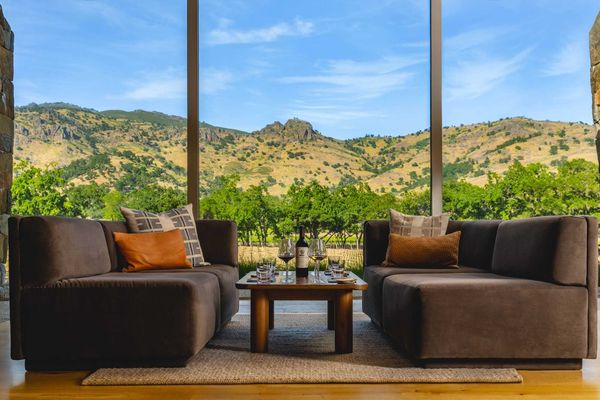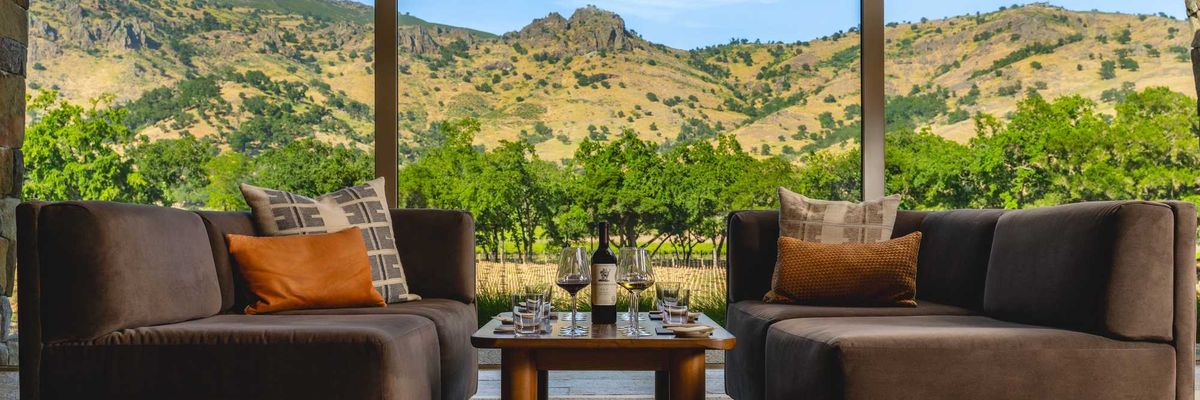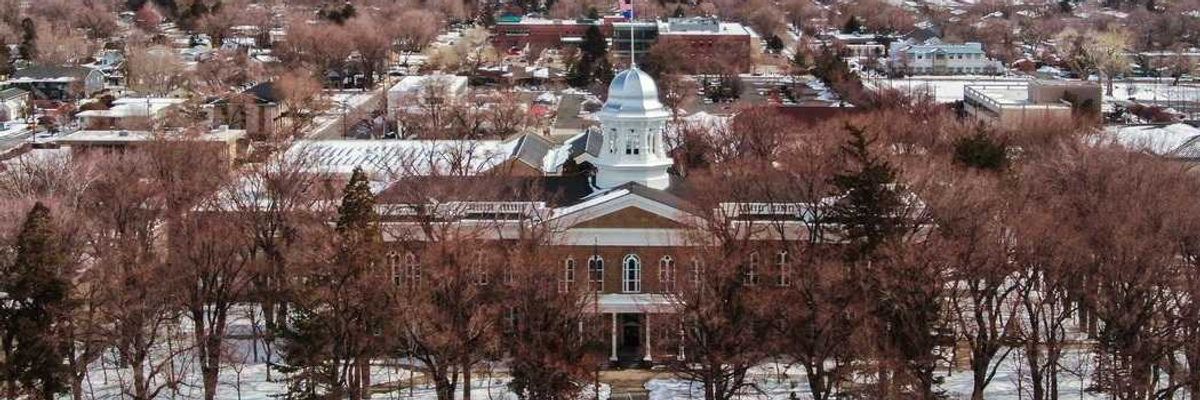Bay views, Twin Peaks, a rainbow-hued array of sushi and lots of passion -- all crucial components in The Full Picture, a new SF indie by local filmmaker Jon Bowden. The writer and director poured everything he had -- his apartment, his personal history -- into the feature-film version of his play Big Mouth, a close look at one SF every-guy as he introduces his fiancee to his very dysfunction family, complete with caddish brother and a mother with a penchant for taking photos at extremely inconvenient moments. And the-writer-director-producer-editor’s efforts appear to be paying off: After a run at the Roxie, The Full Picture is being screened at Rafael Film Center on June 24, and Bowden’s looking forward to his film’s video-on-demand release later this year.
The Full Picture looks great -- were there any guerilla/DIY filmmaking moments involved?
Jon Bowden: Yes, there were a couple things we had to do that way, like the Muni shot. We didn’t intend to do it that way -- we were going through the proper channels. Then our schedule changed, we had one problem with one location, and we had this one little gap of time, and we were talking to Muni about it and trying to organize it all. And when this window of opportunity presented itself we thought, let’s just go!
I intended to have somebody play the irate passenger who gives [lead actor Mark Foster] the look-downs, but because we were against the wall, it’s actually me in the film. What’s funny about it is I’m the one guy that actually stares into the camera: Through the entire film, I’m that jackass! I was looking to see what stop we were getting off at and trying to get Cliff’s [Trainman, the cinematographer] attention.

How did the story for Big Mouth or The Full Picture come about? Is it autobiographical?
JB: The only autobiographical thing about it is that I sort of experienced it from the outside, looking in. I grew up in a little cul-de-sac in New Jersey, and there was a family that was the ruler of the roost. They talked badly about other people and they organized these block parties -- really what you hear about suburbia and don’t want to experience in suburbia. They controlled the whole social unit of the neighborhood. Suddenly it came out that the mother got a phone call from this other woman saying she had a love child with the father, and it came out he was this closet alcoholic and it all unraveled.
So that was the jumping-off point. It was that and coupled with all those other stories you hear in the news. How everyone jokes about people who are going through these horrific experiences -- you see it on late night television, you see it on Leno, people poking fun at other people’s drama. But once they’re out of the spotlight, how do families put it all back together? That’s what I found truly interesting: taking that family and projecting it 15 years down the line. How did they heal? Could they heal?
Did the play vary greatly from the film?
JB: It obviously shrunk in terms of dialogue. With the play, dialogue is all you have. I actually take it as a compliment when people say, “I saw Big Mouth, the screen version, and it felt the same to me.” That to me is a great thing because I actually totally reworked that script. I more or less just dumped it and went after it anew, just to make it more cinematic.
The way you use space in the movie is really interesting. The Victorian hallway of the apartment says so much about the characters and the distance between them.
JB: We made each room representative of emotion, and obviously the living room was where all the action happens. The kitchen and the pantry really was a confessional, framed by the cabinets. It was fun to work with that ! That was actually my apartment, too.

In Twin Peaks?
JB: That’s the one thing we cheated -- the shot of the tower. We actually shot it in the Inner Richmond. I moved from that apartment since. After the shoot my wife was like, “We’re out of here.” It had run its course, having lived with it as a set for a month. Once we had been through that experience, my wife was like, “I don’t want to live on the set anymore. Let’s go find a new place.”
I couldn’t blame her -- it was intense. At times we were going to bed and we’d have C stands and lights and all this stuff just sitting in our bedroom because it was the storage space for the day. Other times we actually slept in the bedroom when it was the set and we couldn’t touch anything. My poor cat was there, too. The cat was hiding the entire time, of course, and it was traumatized by the event -- I would never shoot in my own apartment again! But with the budget we were working with, it’s something we had to do.
What was the budget?
JB: The cat’s kind of out of the bag on it. We had the ultra-low-budget agreement with SAG -- that has to be $200,000 or below.
How did you raise money?
JB: It was all private investors. We did the majority of the raising all before 2008 -- lucky for us. One of the producers Joe Oh came in pretty late, but incredibly, in terms of timing, he actually sold his company to Cisco, so there were a lot of incredible events that happened. We had a business plan and we were fortunate to have some great contacts.
It was really important to me that the people who were investing in this film, got to see the film. So when we raised $100,000, I decided, we’re making this film. We have great talent here in San Francisco. Let’s use this talent. The next production, we’ll worry about bigger names.
Do you want to continue making films in San Francisco?
JB: Yeah, I feel like this place needs someone to stay around. It’s happened in the past where there’s been a little momentum generated in the San Francisco film scene, and once there’s that lure to go to L.A. or New York, people take it. I understand that -- I definitely do. But I love the city, you know! And it’s a great city to shoot out of. Plus my wife is here -- she’s an acupuncturist and has her own business, and my son was born here. It’s just not easy to uproot anymore and I don’t want to.
The thing is, whether or not the community supports local filmmaking. Where the city has been incredibly supportive has been in the actual shooting process. The film commission was easy to work with, and on top of that, since we are a small film, we had to ask for favors of people. “Hey, can we come in here and do it for this price?”
For example Tanuki sushi restaurant, in the sushi scene, on Sixth and California -- they closed down the restaurant from 7 p.m. to 4 in the morning on a normal night they’d be open. They fed my entire crew -- the sushi boat in the film is, like, the crew meal. And at the end of the night I approached them and said, “Hey, let’s settle up for the night.” I was hesitant because I felt so badly -- I didn’t even approach the issue ahead of time. I was just so frightened of what this bill was going to be. But she refused to take a dime. It was just an incredible, incredible gift.
You were a good customer?
JB: It’s true! We were a customer of theirs for years and befriended them over the years. At that point I lived right around the corner from them and my wife and I often went there. In fact the sushi scene kind of occurred there between me and my wife and my mother and my brother, in a joking sense, not with the same tension as the scene in the movie. It happened in that restaurant. The one thing I took from my parents is my mom does take a lot of photos: She’s an artist. She takes photos at funny, inopportune times, and she did that in the sushi restaurant of my wife eating a piece of sushi, which then gave me the idea for the scene.

What brought you to SF initially?
JB: It was skiing actually. It was Tahoe, and I was there for a year. I trying to become a professional skier, doing free skiing sort off the cliffs and that sort of thing.
I loved it, but if we think very few filmmakers make it ... that’s a sport that very few people can subsist on! Just a few skiers out there that are making a decent living -- I’m not even saying living well. Granted they fly all over the place and travel, but I saw all these incredible people that I watched in the ‘80s in these amazing ski videos, the Warren Miller films and Greg Stump films, and they’re still up in Tahoe working construction. Not that there’s anything wrong with that, but it didn’t seem like a career I could sustain past 32. It was one of those things, one of those moments, where I want to do something I’m passionate about, but I wanted to have longevity at it.
And that’s when I went toward film. It’s always been a passion of mine. It’s always been the only thing I’ve ever been interested in. I wasn’t a film major [at Colby College in Waterville, Maine], but they didn’t have one! Any film course they had, I took. It wasn’t till I left and pursued the skiing thing, when I just had to get the guts to do it. That was 15 years ago.
Since then you’ve learned all these different aspects of independent moviemaking?
JB:
I did a short film in ‘99 that played Mill Valley Film Festival. I actually went immediately into another feature called Eddie’s Dad, which I did with a screenwriting partner by the name of Scott Rothman, who’s in New York and does quite well out there. But it was just something that neither him nor I wanted to hang our hat on -- it was our film school, so we decided bury it. I basically took the lessons from that production and looked at how I could improve as a director -- a lot of it was with actors, how to get the good performances. So I took classes at Jean Shelton School for a couple of years and worked with her sons.
From that point, the next time I sat down to write, I found myself writing a play -- we did terrific plays by Albee and Shepard and that was the voice in my head at that point. As an actor, you had to understand the beats and the rhythms and where these writers wanted you to go, and so I did a lot of work to make sure the words came out in an authentic way, trying to have deep characters with complex beats and juicy material for actors to find those characters.
It was only then that I put up Big Mouth -- I wrote it in 2002 and directed it in 2003 at Jean Shelton’s actors theater, and it had a great run, and it was one of those things that audiences really reacted to. It was from that that I saw the potential for turning this into a film. It really took until 2005 or 2006 to really rewrite the script and get it to a place that I liked it. It takes a long time to get a film made, particularly in the manner you wanted it to be.
What do you want audiences to come away with?
JB: Is there a lesson? I try not to be too preachy -- I think it’s for each individual viewer to glean. It definitely sparks conversations -- a lot of guys find a lot of themselves in Hal or Mark, and a lot of women in Erika’s situation, being with someone who’s afraid of commitment. Another thing I definitely didn’t anticipate is how many people see their own family in this family. So many people came up after me after shows, “How did you know this? How did you know my family was like this?” My family is quite stable -- no polygamy or child out of wedlock -- but I take it as a huge compliment when people ask. I tapped into something that resonates with people.
The Full Picture screens June 24, 7 p.m., at Rafael Film Center, 1118 Fourth St., San Rafael. Filmmaker Jon Bowden and actor Bettina Devin will appear. (415) 454-1222, cafilm.org, thefullpicturemovie.com




















